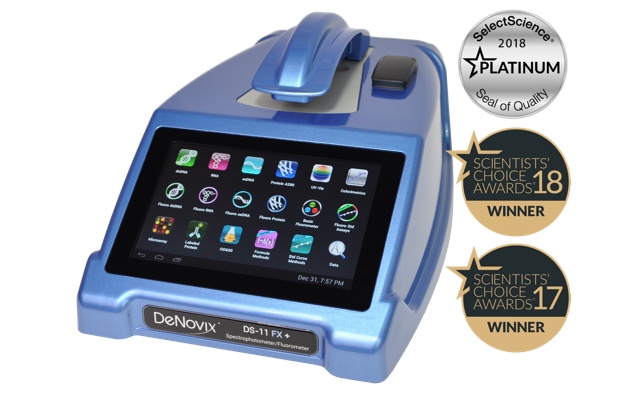Absorbance spectroscopy and fluorescence methods are key tools when it comes to quantifying both deoxyribonucleic and ribonucleic acids (DNA and RNA). Traditionally, biochemists filled measurement capillaries and cuvettes with sample volumes on the scale of milliliters. Novel technologies for molecular analysis have significantly improved the quality of results attained from progressively smaller sample volumes, gradually eliminating the need for conventional sample containers altogether.
Microvolume analysis with established tools like the Thermo Fisher NanoDrop™ spectrophotometer and its competitors offers outstanding performance when quantifying nucleic acids in solutions at unprecedented concentrations. Market-leading Thermo Fisher NanoDrop™ spectrophotometer competitors drastically reduce sample volumes, with lower limits of detection on the sub-nanogram per microlitre (ng/ μL) scale. This impacts virtually every key performance indicator (KPI) in DNA/RNA quantitation processes.
In this article, we will explore some of the cost and performance benefits of microvolume analysis with a focus on the best-in-class Thermo Fisher NanoDrop™ spectrophotometer competitor: the DeNovix DS-11 Series Spectrophotometer / Fluorometer.
Microvolume Analysis with or without Cuvettes
Most DNA/RNA quantification methods do not typically include the use of capillaries and cuvettes. Instead, they are geared towards the unique microvolume sample retention systems of instruments like the Thermo Fisher NanoDrop™ spectrophotometer and its competitors.
However, some spectrophotometric methods such as kinetic or colorimetric assays do commonly use cuvettes for sample containment. DS-11 Series Spectrophotometers are compatible with the broadest possible range of DNA, RNA and protein quantitation assays with a nominal absorbance range of 0.015 – 750 A across the full ultraviolet-visible (UV-Vis) spectrum. Therefore, the DS-11 Series is offered with cuvette UV-Vis option for those types of applications.
Cost-Saving Microvolume Analysis
Eliminating the reliance on disposable capillaries and cuvettes can provide substantial cost-savings depending on the scale of analysis. Though significant, this saving is often secondary. One of the unique selling points of Thermo Fisher NanoDrop™ spectrophotometer competitors is their minimal sample consumption, which can be critical if analytes are in short supply. Reducing measurement volumes to their lowest possible range empowers biochemists to get the most out of valuable sample material.
Faster Analysis of Microvolume Samples
Through a range of ease-of-use features and greater sensitivity, Thermo Fisher NanoDrop™ spectrophotometer competitors like the DeNovix DS-11 Series offer unmatched efficiency compared to traditional nucleic acid quantitation systems. This alone can offer enormous cost-savings, even if sample materials are readily available.
DS-11 Series Spectrophotometers are equipped with patented SmartPath™ technology and Bridge Testing™ verification, which enable automated control of the sample column pathlength via a precision screw / motor combination. Automatic optimization of the pathlength dramatically improves the quality of and speed of results. Sample handling errors due to dilution and additional handling of samples are avoided. Combined with full Wi-Fi and ethernet compatibility, these results can be communicated rapidly and without delay.
Read More about DeNovix, the Leading Thermo Fisher NanoDrop™ Spectrophotometer Alternative
About DeNovix
DeNovix is the award-winning manufacturer of the DS-11 Series Spectrophotometer / Fluorometer for microvolume analysis. If you would like more information about what makes our products the market-leading Thermo Fisher NanoDrop™ spectrophotometer alternative, simply contact a member of the team directly.
NanoDrop™ is a registered trademark of Thermo Fisher Scientific and its subsidiaries and is used for identification and references purposes only. DeNovix, DeNovix products and this website are not endorsed by Thermo Fisher Scientific.



